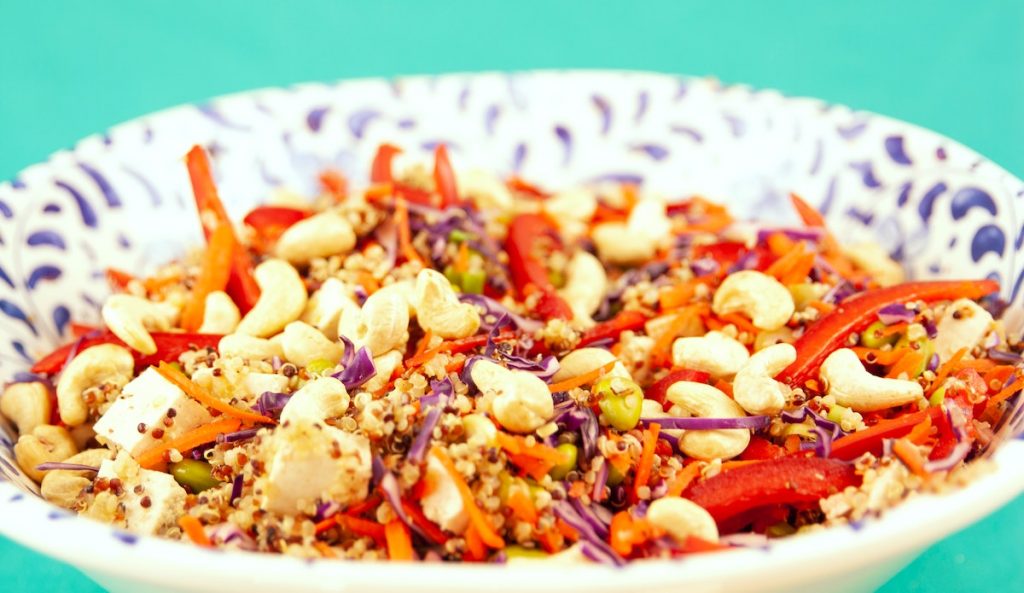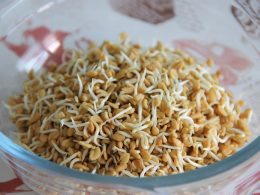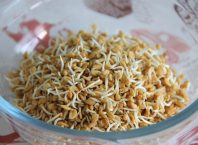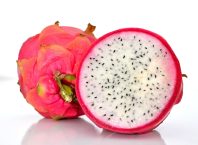Table of Contents
What Is Quinoa?
Quinoa is a complete protein and high fiber food. It is also a good source of antioxidants and minerals. It is also a low-glycemic food. As a result, quinoa is considered a healthier food than other grains. In addition, quinoa is low in fat and contains monounsaturated fats that help lower bad cholesterol.
Quinoa is a grain that originated in South America. It is now grown worldwide. Its botanical name is Chenopodium quinoa. It belongs to the goosefoot plant family, which also includes spinach, beets, and Swiss chard. In ancient Greek, Chenopodium meant “little goose foot,” referring to the plant’s resemblance to aquatic webbed feet. It was first grown in Peru and Bolivia and is now grown in more than 120 countries.
Quinoa comes in three main varieties. The red variety has a nuttier flavor and requires longer cooking time. It is used in salads and as a garnish. It is gluten-free and non-GMO. As a whole grain, quinoa has the potential to fight poverty, malnutrition, and hunger.
Quinoa comes in white and red varieties. Both types have healthy benefits, but they have slightly different nutritional value. White quinoa is less bitter than red and has more omega-3 fatty acids and carotenoid content. The darker quinoa is also higher in antioxidants. So, which type of quinoa should you choose?

Type of quinoa
1. Gluten-Free White Quinoa
If you’re looking for a new gluten-free grain, you may want to try White Quinoa. It’s widely available and tastes great. You can use it in soups, salads, and even risotto. It can also be mixed with other grains and added to granola or breakfast bowls. You can find quinoa in many different colors, but the white variety is the most common. The best part is that it’s easy to cook and eat.
2. Red Quinoa
Red Quinoa is an excellent source of fiber and is very high in magnesium. It has also been linked to reduced risk of some cancers and heart disease. It also contains iron, a mineral that is essential for making hemoglobin, the substance that carries oxygen to the body’s cells. This mineral also helps prevent fatigue and improve cognitive function. It is also a good source of fiber, which has been linked to better mental health.
3. Black Quinoa
Black Quinoa is a great grain that is high in fiber, protein, and antioxidants. It is a close cousin of the amaranth grain and is great for making soups and salads, and is often mixed with risotto. It can also be added to breakfast bowls. Quinoa is also a great source of plant-based protein and contains all nine essential amino acids.
Nutrition Facts about quinoa
One cup (about 185 grams) of cooked quinoa contains the following nutrients:
- 222 calories
- 39.4 grams carbohydrates
- 8.1 grams protein
- 3.6 grams fat
- 5.2 grams fiber
- 1.2 milligrams manganese (58 percent DV)
- 118 milligrams magnesium (30 percent DV)
- 281 milligrams phosphorus (28 percent DV)
- 77.7 micrograms folate (19 percent DV)
- 0.4 milligrams copper (18 percent DV)
- 2.8 milligrams iron (15 percent DV)
- 0.2 milligrams thiamine (13 percent DV)
- 2 milligrams zinc (13 percent DV)
- 0.2 milligrams riboflavin (12 percent DV)
- 0.2 milligrams vitamin B6 (11 percent DV)
- 318 milligrams potassium (9 percent DV)
- 5.2 micrograms selenium (7 percent DV)
- 1.2 milligrams vitamin E (6 percent DV)
- 0.8 milligrams niacin (4 percent DV)
- 31.5 milligrams calcium (3 percent DV)
Top Health Benefits of Quinoa
1. Quinoa Aids in Weight Loss
Quinoa is an incredible source of fiber, protein, and vitamins and minerals. It also contains a high level of lysine, which helps the human body repair damaged tissue and fight disease. It is also packed with iron and helps maintain the immune system and prevent anemia.
Quinoa is a seed that grows in the Andes Mountains of South America. One serving of quinoa has only about 20 grams of carbohydrates, but is packed with fiber, minerals, and vitamins. It’s also a complete protein, containing all nine essential amino acids, including those required for proper body function. It also contains magnesium, zinc, and phosphorus, which are essential to a healthy diet. In fact, one serving contains more magnesium and phosphorus than the recommended daily intake of each. It also has a high amount of fiber, which keeps hunger at bay.
Quinoa is an excellent choice for people who want to lose weight. It’s rich in fiber, and one cup of cooked quinoa contains 40 fewer calories than one cup of white rice. Quinoa is also a great source of iron, which is important for red blood cell health. Iron helps transfer oxygen to cells. It also contains magnesium, which aids in the regulation of blood sugar and nerve impulses. It also helps the body detoxify itself.
Another benefit of quinoa is its high level of potassium. It lowers blood pressure and reduces the risk of stroke. Moreover, quinoa contains bioflavonoids, which are antioxidants. These compounds are known to help prevent cancer, diabetes, and cardiovascular disease.
2. Quinoa May Help Fight Cancer
Quinoa is a gluten-free whole grain food with a number of health benefits that make it a good option for a healthy diet. It contains peptides that inhibit the activity of a protein called HDAC1. HDAC1 controls the expression of genes related to cancer. As a result, quinoa may help prevent cancer and may even help treat cancer.
Quinoa has several anticancer properties, including antiangiogenic activity, which inhibits the growth of new blood vessels and suppresses cancer cells. Researchers from Spain and Italy studied the quinoa phenols, and found that they are similar to polyphenols found in green tea. These phenols have been shown to inhibit cancer cell proliferation, angiogenesis, and inflammation. In addition, quinoa also contains saponins, which are bitter tasting chemicals common to many plants.
A recent study has shown that quinoa peptides can inhibit colon cancer cells. This anti-cancer activity was observed in fractions of five kDa and higher. However, it is important to note that the anti-cancer activity may depend on the molecular weight fractions and the environment of the study.
Researchers have also found that quinoa has antiproliferative properties. They studied different samples with the help of two enzymes, pepsin and pancreatin, which result in partial hydrolysis of the quinoa protein. These digestions had higher antiproliferative activity than the gastric digests. Additionally, the anticancer properties of QPH were found to increase as the concentration of the food increased.
3. Quinoa Supports Heart Health
Quinoa is a gluten-free grain that provides many heart health benefits. It is high in protein and low in fat and has a high fiber content. It is also a great source of important minerals and vitamins, including magnesium. It can replace grains such as wheat or rice, and is an excellent choice for a healthy diet.
Quinoa is an ancient grain that originated in the Andes Mountains of Peru. Today, 80% of the world’s supply is grown in these mountains. It was once considered a common peasant food, but began gaining wider acceptance in the health food industry in the 1970s. It is also grown in the Rocky Mountains of the United States, as well as other parts of the world. It comes in black, red, and white varieties. Red quinoa is more nutritious than white quinoa.
Its high fiber content is especially important for good health. Fiber-rich foods bind with bile acids and help the body eliminate waste. In addition, quinoa has several omega-3 fatty acids and can reduce the risk of coronary heart disease. Vitamins A, B, and C in quinoa support healthy skin and reduce dark spots and pigmentation.
Quinoa is widely available and can be added to a variety of recipes. However, it should be rinsed before cooking, as it contains saponins that can impart a bitter taste to the food.
4. Quinoa Helps Keep Your Gut Healthy
Quinoa is a great food for the digestive system. It is loaded with many vitamins and minerals that are beneficial to your body. These include folate, magnesium, potassium, and iron. In addition, quinoa helps keep your bones healthy. It is also a good source of fiber. Fiber promotes regularity and can prevent constipation.
Research has shown that quinoa contains special prebiotics that aid the growth of gut bacteria. It also contains phytonutrients that can fight inflammation and oxidative stress. You can find quinoa in the grains section of your grocery store, usually next to rice or wheat. You can get it in two main varieties: white and yellow. The white and yellow varieties are mild in flavor. The black and red varieties have more earthy flavors.
Quinoa is a great alternative to white rice and pasta. It has a high protein content and is gluten-free. It is part of the legume family, which contains a good amount of fiber. It is also a good source of antioxidants. And if you are trying to avoid processed foods, quinoa is a great choice.
In addition to being gluten-free and a good source of protein, quinoa also contains essential amino acids. This is beneficial because the human body cannot produce enough of these amino acids. So, a serving of quinoa each day can help you meet your daily protein needs.
5. Quinoa Supports Bone Health
Quinoa is an excellent source of protein and fiber, two nutrients essential for bone health. It is also a rich source of magnesium, a mineral that is needed to build strong bones. Additionally, it contains all nine essential amino acids, which are needed by the body for proper functioning of the bones. Quinoa also contains the essential minerals manganese and copper, which are essential to maintaining proper kidney function and bone health.
Quinoa is also a good source of iron. Just one cup of cooked quinoa contains about three milligrams of iron, about 15 percent of the recommended daily allowance. This mineral is necessary for the body to function properly and to prevent anemia. It is also necessary for healthy muscle tissue and red blood cell production.
Quinoa can be cooked with a variety of different methods. The healthiest way is to cook it with two parts water. It should be simmered for at least 20 minutes until it becomes translucent. To increase its nutritional value, quinoa can also be roasted. To roast quinoa seeds, place them on low heat and stir constantly for about five minutes. Quinoa leaves are eaten as vegetables, while its flower heads are often added to soups and curries. However, it is important to note that quinoa flower heads are high in oxalic acid, which can lead to kidney stones.
Quinoa is also high in magnesium and phosphorus, making it a very important food for bone health. The elevated levels of these minerals can help prevent or even reverse osteoporosis. Additionally, the high levels of manganese can help maintain healthy blood glucose levels and reduce the risk of diabetes. It is important to note that manganese also plays an important role in gluconeogenesis, which is the process that helps balance blood sugar levels. Likewise, the presence of butyrate in quinoa inhibits inflammation.
6. Quinoa Reduces Risk of Diabetes
Recent studies have indicated that quinoa may reduce the risk of diabetes. The study was conducted using a quinoa-heavy diet. The researchers monitored the blood sugar levels of the participants for 28 days. During that time, they also substituted some foods with quinoa-based alternatives.
The results were encouraging. The levels of TG, LDL, and total cholesterol decreased in both women and men. Additionally, the subjects’ fasting blood glucose decreased by about eight percent. Although these results were preliminary, they support further research on the topic. However, further studies should be conducted using a more robust design.
The study also found that quinoa can reduce the risk of Type II diabetes. This is because it helps regulate fluctuations in blood sugar levels. It could also help prevent cardiovascular disease. It can even serve as a partial cereal replacement. By controlling spikes and dips in blood sugar, quinoa can prevent both diabetes and cardiovascular disease.
The researchers noted that the quinoa-based diet reduced the risk of diabetes in prediabetic participants. Participants were given glucose monitors to monitor their blood glucose levels at each meal. In addition to reducing the risk of diabetes, the study participants’ waist circumference and weight decreased. The authors concluded that these changes were due to a change in their dietary pattern.
It is also important to note that quinoa is very high in fiber. A half cup of cooked quinoa has approximately twenty grams of carbohydrate. This is lower than the carbohydrate content in a half-cup of white rice or brown rice. The reduced carb content lowers blood sugar and A1C levels.
7. Quinoa Contains Disease Fighting Antioxidants
Quinoa is rich in phenolic compounds known as polyphenols. These compounds have a broad spectrum of health-promoting properties, including antioxidant and anti-inflammatory effects. These compounds are found in the seeds and leaves of quinoa. In fact, quinoa contains as many as eighty nine mg of individual phenolics per gram dry weight.
The compounds that make quinoa so beneficial to health include saponins, a naturally occurring compound found in many plants. They create a mild detergent effect, causing a white, soft foam when you rinse quinoa. However, saponins also act as antinutrients, blocking the absorption of vitamins and minerals in the gastrointestinal tract. In some cases, they even negatively affect the lining of the digestive tract, leading to diseases such as leaky gut syndrome. Moreover, saponins have also been shown to damage healthy red blood cells.
Quinoa also contains significant amounts of potassium, which is important for reducing blood pressure. As a result, eating quinoa regularly can reduce the risk of heart disease and stroke. It also contains antioxidants known as bioflavonoids. These compounds have gained much attention in recent years, and some studies indicate that they play a role in the prevention of various diseases.
Quinoa contains a large variety of vitamins and minerals, which are essential to a healthy diet. These nutrients can help fight off oxidative damage in the body, improve vision, regulate cell growth and development, and regulate various physiological processes.
8. Quinoa – A Nutritious and Versatile Food
Quinoa is a nutritious and versatile food, which can be incorporated into most meals. It can be added to salads and stir-fries, and can even be used as a substitute for rice in recipes. It is also gluten free, making it an excellent choice for people who are following a gluten free diet. Quinoa is also a great breakfast food, and can be substituted for oatmeal or porridge. It also contains a high amount of protein, making it a nutritious way to start the day.
People who are sensitive to gluten should be cautious when choosing quinoa as a gluten free grain. There are a number of possible risks, so it is advisable to consult a health care professional to find out if quinoa is right for you. Some foods, including quinoa, contain high levels of gluten, so it is important to read labels carefully.
Quinoa is a nutritious and heart-healthy grain, packed with protein and antioxidants. However, it’s important to note that it’s not necessarily gluten-free. Gluten is a common ingredient in grains and processed foods, and some people avoid it because it can aggravate their immune system. Despite this, quinoa is still beneficial for people following a gluten free diet, because it is low in calories per serving and high in fiber, protein, magnesium, and phosphorus.
Quinoa can be a good substitute for rice for those following a gluten-free diet. As a whole grain, it provides an excellent source of antioxidants, which help fight free radicals and prevent chronic illnesses. It also contains compounds that are effective cancer fighters.
9. Repetition Suppression Enhances Regularity Encoding
One of the critical properties of the auditory system is its capacity to encode temporal regularities. These short-term representations of environmental statistics aid in the formation and detection of auditory objects. One mechanism for enhancing regularity encoding is repetition suppression. This reduces neural activity triggered by repeated auditory stimulation in animal cortical and limbic regions.
Recent studies have shown that a number of different blood oxygen level-dependent activities are reduced or enhanced when the same pitch is repeated. Furthermore, repetition suppression has been observed at lower levels of the auditory hierarchy. This suggests that regularity encoding occurs in the whole auditory anatomical hierarchy and across multiple temporal dimensions.
10. Supplements That Support Brain Health
Many people take supplements to support brain health, but not all of these products are proven effective. However, some supplements are safe and contain only natural ingredients. Some brain health supplements can help protect your brain from stress, while others can improve your memory and concentration. While many of these supplements can help you stay alert and improve your memory, it is important to consider the source of these supplements before taking them.
Eating a nutritious diet is the most important strategy for preventing cognitive decline. A balanced diet should include a variety of vegetables, fruits, and whole grains. A good diet also contains protein from plant sources and fish. In addition to healthy fats, a diet rich in plant-based foods has been shown to protect the brain against free radical damage.
How to Cook Quinoa and Add to Diet?
When preparing quinoa, it is important to cook it in a ratio of two parts liquid to one part quinoa. Once you have added the liquid, you should cook the quinoa on a medium heat for about 15 minutes. Ensure that the water has been completely absorbed by the quinoa. Afterward, remove it from the heat. Cooking quinoa in a broth with low sodium content is ideal.
Quinoa is a versatile superfood that is easy to cook. It can be eaten on its own, or incorporated into other dishes. The health benefits of quinoa are numerous. Here are some ways to incorporate it into your daily diet: Add it to your favorite salad, or replace your usual oatmeal with it.
You can make a quinoa salad to go with your lunch or dinner. It is much healthier than a traditional mayo-based salad. To make it even easier to digest, add diced apples and celery to the quinoa. You can also add quinoa to soups to add bulk.
When cooking quinoa, make sure that it is not overcooked. You should cook it until the liquid has been absorbed and the quinoa is crunchy. You can also add some fat or butter to the mixture to give the quinoa more flavor.
Risks and Side Effects of Quinoa
Quinoa has a long list of benefits, but there are also a few risks and side effects. Some people are allergic to the grain and experience symptoms such as elevated heart rate, pale skin, and low blood pressure. In rare cases, people may also suffer from anaphylaxis, a serious allergic reaction that can be fatal if untreated.
Quinoa contains high levels of oxalate, a compound that is naturally present in many plant-based foods. While most of it is excreted through the urine, it can bind to calcium and cause kidney stones in susceptible individuals. As a result, quinoa is best avoided by people who are at risk for kidney stones.
Quinoa is also rich in antioxidants. It contains three unique nutrients that have been shown to inhibit cancer cell growth. One of these nutrients, saponin, can cause cancer cells to die. While this may seem counterintuitive, this substance has been shown to induce the death of cancer cells in glioblastoma, leukemia, and lymphoma patients.
Quinoa has been proven to help people lose weight and improve heart and gut health. It is also gluten-free and can be substituted for gluten-containing grains. It can be used in breakfast, soups, and other dishes, making it a great option for those with gluten allergies. And because it’s so versatile, it is easy to incorporate it into a variety of recipes.
Conclusion
Quinoa is a whole grain, and studies suggest that eating more whole grains has health benefits. It lowers the risk of type 2 diabetes and improves blood sugar control. In addition, it has low glycemic index, which means it doesn’t spike blood sugar levels. In one study, quinoa reversed the effects of a high-fructose diet on mice.















